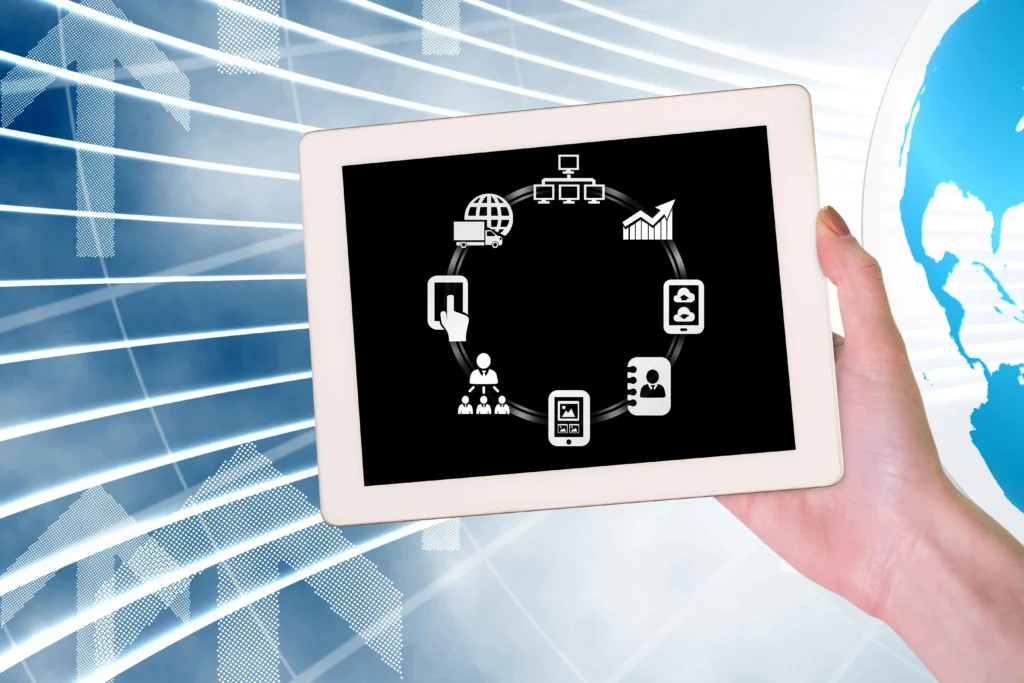From Supply Chains to Healthcare: Real-World Use Cases of Blockchain-IoT Integration

Where IoT and Blockchain Converge
Enterprises today operate in ecosystems where transparency, traceability, and trust are critical. As connected devices multiply, the strategic combination of IoT and Blockchain development is emerging as one of the most practical paths toward secure, data-driven operations. Together, they create a system where devices collect and share real-time data, while Blockchain ensures that the information remains tamper-proof and verifiable. Across industries, this integration of IoT, Blockchain, and Enterprise Software Development is moving beyond pilots. Businesses are applying it to real supply chains, logistics networks, and healthcare operations—turning connected systems into intelligent, accountable infrastructure.
To unlock the full potential of this transformation, organizations are increasingly investing in Blockchain and IoT software development that aligns with key business goals. These enterprise IT solutions enable seamless interoperability between connected assets, business systems, and analytics platforms. By building architectures that are both decentralized and data-aware, enterprises can automate decision-making, strengthen audit trails, and ensure every transaction or sensor update is both trusted and traceable. This foundation sets the stage for integrating AI, predictive analytics, and other advanced technologies into everyday operations.
Why Convergence Matters
IoT devices generate massive streams of operational data, but that data is only as reliable as the network protecting it. Blockchain adds the layer of integrity needed for decentralized validation and traceability. When combined, the two form a powerful foundation for AI-driven Enterprise Software Development, enabling automated, secure exchanges of data and value among stakeholders—manufacturers, logistics providers, hospitals, and regulators—without relying on a single point of control. For technology leaders, this convergence of IoT, Blockchain, and AI-powered Enterprise Software opens new opportunities to reduce friction, improve compliance, and deliver measurable outcomes across multiple domains.
Supply Chain and Logistics Innovation
In global trade, visibility is the new competitive edge. IoT and Blockchain together enable continuous tracking of assets, shipment conditions, and handoffs across the supply chain.
- Product Provenance: Sensors record the temperature, location, and movement of goods, writing each data point to a Blockchain ledger. Every participant—from suppliers to retailers—can verify authenticity and quality.
- Automated Smart Contracts: Logistics events such as shipment arrivals or quality checks can trigger Blockchain-based contracts automatically, reducing paperwork and human intervention.
- Reduced Loss and Fraud: Immutable records and IoT telemetry make it easier to detect anomalies in real time, preventing theft and counterfeit substitution.
For example, food distributors are already using connected tags and Blockchain records to trace produce from farm to table, ensuring safety and compliance with industry standards. This approach transforms logistics from reactive to predictive, building greater trust across partners and consumers.
Healthcare IoT in Practice
In healthcare, device integrity and data security can directly impact patient outcomes. Integrating Blockchain with healthcare IoT devices provides an auditable chain of trust from sensor to system.
- Medical Device Monitoring: Smart devices track vital signs or equipment status and record this information to a Blockchain ledger for verification. Hospitals gain real-time insights without compromising data integrity.
- Drug Traceability: Blockchain-enabled IoT packaging helps authenticate pharmaceuticals, reducing counterfeit risks and ensuring proper storage conditions during transit.
- Data Sharing and Compliance: Blockchain-controlled access lets authorized practitioners view patient data securely while maintaining privacy and regulatory compliance.
These applications demonstrate how distributed technology can enhance reliability, not just efficiency, within connected healthcare ecosystems.
Technical Foundations of Integration
Successful Blockchain-IoT systems depend on a few core principles:
- Interoperability: Devices, gateways, and ledgers must exchange data through open standards and APIs.
- Security at the Edge: IoT sensors should authenticate securely before sending data to the Blockchain.
- Scalable Infrastructure: Lightweight consensus mechanisms and cloud-edge coordination are essential to manage growing transaction volumes.
- Governance and Access: Clear role definitions and audit capabilities keep networks compliant and transparent.
Enterprises implementing these layers early can scale more confidently and maintain consistent data quality across operations.
Future Outlook: Decentralized Intelligence for Connected Enterprises
As adoption expands, organizations will begin orchestrating multiple Blockchain-enabled IoT networks across supply chains, facilities, and clinical environments. These ecosystems will exchange verified data autonomously, allowing systems to coordinate logistics, maintenance, and healthcare workflows without manual oversight.
The long-term value lies not only in automation but in creating trusted, collaborative environments across industries. Businesses that align early around interoperability and governance standards will define how the next generation of connected enterprises operates.
The partnership of IoT and Blockchain is moving from concept to measurable reality. From logistics innovation that prevents product loss to healthcare IoT systems ensuring patient safety, these technologies are proving their worth in real-world environments.
Rayblaze focuses on helping enterprises design, build, and deploy solutions that unite connectivity with integrity. A healthy combination of IoT data streams with Blockchain trust frameworks enables organizations to move faster, operate transparently, and deliver value that lasts.


